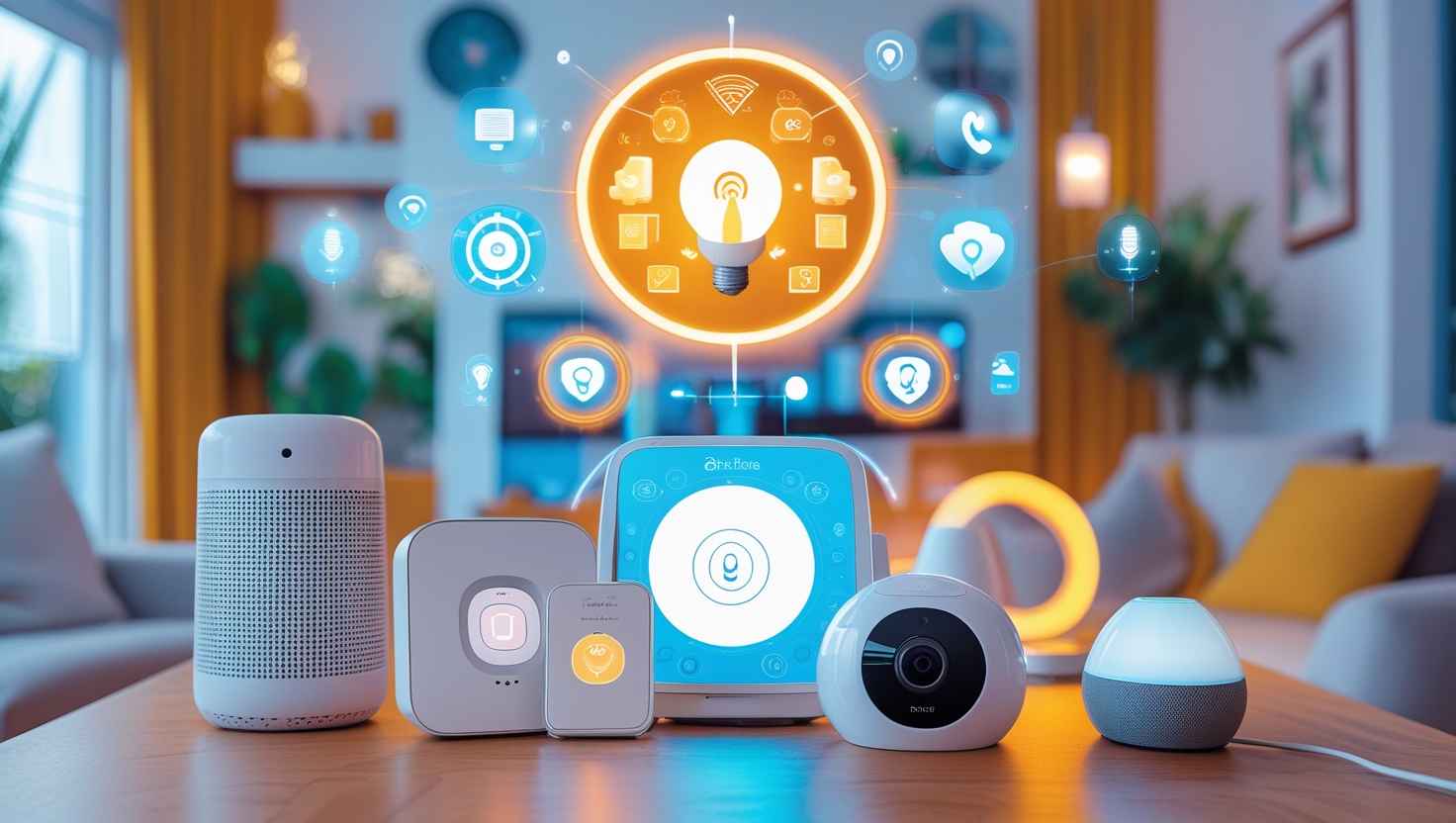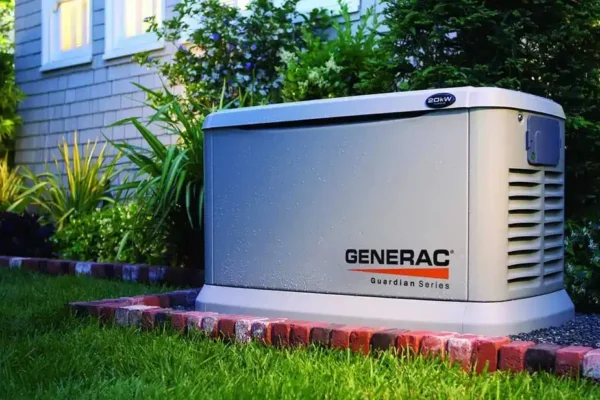
Home Tech Lovelolablog: Embracing the Future of Smart Living
Introduction
Welcome to the home tech lovelolablog! Home technology continues to transform our way of living more than ever in the domestic environment. Home technology now enables smart thermostats to learn your choices and secures families through security systems thus making homes simple and secure and efficient. Theis blog provides an in-depth investigation of home technology developments. The article explores smart home benefits while demonstrating its operation and provides guidance for building your personal smart house setup. People who love technology together with those who are new to it will benefit from the guidance provided in this guide to smart living.
Understanding Home Technology
What is Home Technology?
Smart home technology describes all devices which enhance a residence by achieving greater automation and efficiency and improved convenience. The modern home technology integrates laundry and kitchen machines together with interconnected devices and controlled systems which operate through handheld mobile technology or voice commands. The purpose of home technology exists to create simpler routines and improve safety and comfort standards.
For example:
- The automated smart thermostat modifies temperature settings because of your predetermined routine preferences.
- The appliance of a robot vacuum allows floor cleaning during your time at work.
- The smart doorbell provides visual access to front door visitors no matter where you are located because of its global connecting capability.
History and Evolution
Technology which powers homes has experienced major advancements throughout recent history. During the early 20th century household duties underwent a transformation because of the introduction of washing machines and refrigerators. Throughout the late 20th century homes started adopting programmable devices that included VCRs and digital thermostats.
Internet usage along with wireless connectivity marked the true breakthrough in the industry. Intelligent houses of the present day operate through the combination of Wi-Fi and Bluetooth and artificial intelligence (AI). Smart devices communicate through Amazon Alexa or Google Home platforms which allow their interconnected operation to match your personal habits.
Key Categories of Home Technology
Smart Home Devices
People living in modern times rely on smart home devices as the fundamental components of contemporary home technology. Modern technology equipment exists to assist people through two distinct applications: automated processes and distant control functions. Several popular device categories exist in the current market.
- Smart Thermostats: The devices Nest and Ecobee use your routines to control heating and cooling functions in your home. The devices maintain control through remote applications for operation.
- Smart Lighting: With Philips Hue products users can manage their lighting control functions to fit specific settings according to their needs. These devices provide users with automatic scheduling capabilities to control when their lights activate or deactivate.
- Smart Security Systems: The system includes cameras together with motion sensors and alarms which deliver notification about suspicious behavior. Selections among available systems include monitoring services performed by professionals.
Home Automation Systems
Multi-device smart systems function as platforms to manage interconnected smart gadgets through single command systems. Examples include:
- Amazon Alexa: This voice-controlled assistant enables control of both lighting and music operations in a system.
- Google Home: The device works smoothly as it integrates completely with Google Calendar and Maps services.
- Apple HomeKit: Apple customers can use Siri to manage their smart devices through this particular system.
These systems enable you to generate routines which include:
- You should turn off every light in your house after leaving the premises.
- Music that brings you calmness will activate at your command by saying “Goodnight.”
- One command allows users to lock all doors securely.
Energy Management Technologies
The main emphasis in residential technology revolves around energy efficiency since smart energy systems control both power loss elimination and utility savings.
- Smart Meters: The devices record present-time energy usage while showing the patterns of energy consumption.
- Energy-Efficient Appliances: Users can operate modern refrigerators together with dishwashers and washing machines while reducing power consumption yet maintaining operational brilliance.
- Solar Panels with Smart Inverters: Houseowners can convert their homes into renewable energy generators using apps for monitoring their output.
Essential Smart Devices for Every Home
The following list contains some essential devices for beginners who want to start their home technology journey:
Smart Thermostats
A smart thermostat serves as an ideal entry point for building a smart residence. Home comfort pairs with energy saving capabilities by allowing the device to understand household patterns. For instance:
- According to scheduling data the Nest Learning Thermostat adapts its temperatures.
- Your heating and cooling systems will receive balanced distribution by installing room sensors that are standard features of Ecobee thermostats.
Smart Lighting
Windows create significant effects on how your home environment feels and based on their lighting types. With smart lighting solutions:
- You have the option to lower light intensity for watching movies and you can boost lighting levels during working time.
- Users can adjust lighting colors through the system interface when they wish to celebrate parties or special holidays.
- When motion detectors detect presence within a room or yard area the lights get activated for security purposes.
Smart Security Systems
Safety ranks as the essential concern each person should prioritize. Secure smart systems provide users with the following features:
- Your smartphone allows direct access to live camera video streams.
- Alerts for unusual activity (e.g., someone approaching your door).
- Remote locking/unlocking of doors via apps.
Users can select from two popular brands which are Ring for video doorbells and Arlo for wireless cameras.
Smart Appliances
Modern household appliances reach new heights in terms of intelligence through modern technology.
- Refrigerators: Such appliances include built-in cameras which enable you to view inside items while shopping at the store.
- Ovens: The automated system lets users activate preheating through their smartphone application.
- Washing Machines: Carpool your energy usage by performing appliance loads during times of low power demand.
These gadgets deliver convenience and premium features to daily jobs in addition to their practical benefits.
Also Read: Tech-Biztech .com: Your Guide to the Future of Business and Tech
Setting Up a Smart Home
Creating a smart home doesn’t have to be overwhelming. Here’s how to get started:
Initial Considerations
Before buying any devices:
- Before purchasing devices you need to establish what problems technology should resolve.
- A reliable Wi-Fi network functions as the essential requirement for operating most smart devices.
- You should establish a budget which you can increase infectionally as your requirements expand.
Choosing the Right Hub
The central hub makes device management easier through its capability to integrate all equipment under one central location. Popular options include:
- Amazon Echo (Alexa)
- Google Nest Hub
- Apple HomePod (for Siri users)
Select a hub product which can support your main devices.
Step-by-Step Setup Guide
Setting up a smart home can seem daunting, but it can be a straightforward process if you follow a structured approach. Here’s a detailed guide to help you get started.
Start with Simple Devices Like Smart Plugs or Bulbs
A suitable starting point for home automation includes implementing either smart plugs or smart bulbs in your space. The devices install effortlessly without requiring complex efforts while bringing major enhancements to your home system.
- Smart Plugs: Smart plugs function as enabling devices for smartphone-based and voice-controlled management of all connected appliances. You can install the smart plug by plugging it into any outlet before linking your device to complete setup through the manufacturer’s app guide.
- Smart Bulbs: Traditional bulbs should be replaced by smart bulbs which operate through remote control. After installing the bulb you must download its associated app and execute the setup procedures through the app interface. The procedure for connecting a bulb to your Wi-Fi network is provided by most application programs.
Using basic devices at first allows you to learn the technology through familiarizing yourself with the devices before moving on to more complex equipment.
Add More Advanced Gadgets
After mastering basic devices you should move onto more advanced technological devices.
- Smart Thermostats: The Nest Learning Thermostat uses users’ behavioral patterns to improve their residence heating and cooling operation. Following installation you must replace your current thermostat along with Wi-Fi set-up through the app provided by the manufacturer.
- Smart Security Cameras: The installation of these cameras enables remote monitoring of properties while improving their security status. You should follow installation guidelines from the app by putting the camera in position and attaching it to your current Wi-Fi network through the app interface.
Adding such devices one at a time allows you to build an integrated smart home system that avoids overwhelming feelings.
Use Apps Provided by Manufacturers for Easy Installation and Control
Attention-grabbing applications (apps) that work alongside smart devices make the installation process much easier and provide remote device control functionalities.
- Installation Process: Through the app users can receive step-by-step instructions to configure their device starting with Wi-Fi connection steps and option to give it a naming identifier.
- Control Features: Users can operate devices through remote control after completing the app installation. You can change device schedules as well as settings remotely from any location while keeping track of usage.
When you use producer mobile applications they make setup procedures more straightforward and enable ongoing management features for smart home systems.
Regularly Update Firmware/Software for Optimal Performance
Smart devices need proper maintenance to guarantee their best operational state through firmware and software updates.
- Firmware Updates: Managers of these devices deliver regular firmware updates to resolve bugs and boost their functionality along with their safety capabilities. Run periodic checks on the app to obtain available software updates that you should install right away.
- Software Updates: The operating system of your smartphone must stay updated because this will preserve its ability to work with new improvements and features found in control apps.
Your devices remain protected by regular updates which also improve their operating performance while reducing the possibility of vulnerabilities.
Securing Your Smart Home
As you embrace home technology, cybersecurity becomes crucial. Here are essential steps to secure your smart home:
Use Strong Passwords for All Accounts/Devices
Your security password protects your devices from unauthorized entry at the initial level.
- Create Unique Passwords: Build secure passwords through multiple components which include alphanumeric symbols and special characters. Use passwords that cannot be easily predicted by avoiding popular words together with personal dates.
- Password Managers: A password manager should be used to create and safely store complex passwords.
The usage of robust password protection methods decreases significantly the probability that unauthorized entities will access your smart devices.
Enable Two-Factor Authentication Wherever Possible
Two-factor authentication (2FA) functions as an added security measure that includes two verification methods after password entry to stop unauthorized access.
- What is 2FA?: To log in successfully users must provide both their password and verify with a second method such as a text code delivered to their mobile phone.
- Implementation: Smart device applications enable users to find 2FA security features under their security settings. Set up this security feature whenever possible for your cybersecurity protection in case of attacks.
The implementation of 2FA keeps intruders from accessing accounts even when they possess the password.
Regularly Update Device Firmware/Software to Patch Vulnerabilities
Your security depends heavily on device update maintenance.
- Automatic Updates: The device settings should allow you to turn on automatic updates when available. Updating your devices under automatic mode lets you access new security patches right after release date.
- Manual Checks: To get firmware updates you should regularly examine devices that do not perform auto updates via their official apps and websites.
Using proactive update management enables you to defend your connected home systems from potential security dangers.
This comprehensive tutorial for smart home setup with effective security systems allows residents to access modern technology advantages in a protected and efficient environment.
Future Trends in Home Technology
Modern home technology brings significant excitement to users. Several developments in the industry segment have emerged which are influencing its path forward.
AI and Machine Learning
Home technology receives revolutionary enhancements from artificial intelligence (AI) and machine learning (ML) technology. These technologies transform devices into smarter systems with enhanced user interface. Here are some key developments:
- Enhanced Device Intelligence: The learning capability of AI tools enhances through monitoring user activity which allows them to improve their output based on observed human behavior. AI cameras have the ability to distinguish human bodies from animal bodies to decrease security system false alarm incidents. The capability supports home security by delivering relevant information that home guardians can turn into tangible actions.
- Natural Language Processing (NLP): Virtual assistants who perform under the names of Amazon Alexa and Google Assistant demonstrate advanced capabilities to recognize natural human speech. Users now enjoy a natural method of device interaction because voice commands and questions can be used without strict requirements for specific wording. Users now have the choice to activate living room lights through the command “Turn on the living room lights.”
- Predictive Maintenance: Through usage analysis AI develops the ability to determine which maintenance tasks or repairs an appliance requires. The predictive maintenance practice stops equipment breakdowns while actively extending device durability. Smart washing machines contain detection systems which send alerts when they notice strange vibrating patterns because they want to indicate potential hardware issues.
Integration with IoT (Internet of Things)
Everyday objects link to internet networks through the Internet of Things (IoT) system thereby enabling them to exchange data automatically. The interconnected operation between IoT devices results in better integration levels for smart home control.
Automated Routines: The alarm clock initiates your coffee preparation and temperature control through automatic commands directly from your desired routine. The automated system combines to make life easier and simplify regular activities.
Data Sharing: IoT devices enhance performance through their ability to exchange shared information with each other. When connected to a weather service the smart thermostat obtains temperature forecast information which enables it to modify its operational settings.
Enhanced User Experience: The connection of IoT appliances enables manufacturers to deliver personalized solutions to users. Smart lighting technologies modify their operation according to both day time scheduling along with user-selected settings to generate suites perfect for different environments.
Voice Control and Virtual Assistants
The modern household now requires voice control as a basic standard for operation.
- Convenience: The home management features within voice-controlled systems give users a smooth user experience for easy control of multiple residential functions. The virtual assistant enables users to manage their music as well as set reminders and operate other smart devices by voice commands without physical interaction.
- Integration with Services: Users benefit from enhanced productivity with Google Assistant because this virtual assistant enables direct voice command access to Google service functionalities that include calendar and reminder management. The Amazon Alexa platform integrates multiple thousands of third-party applications through its skill and app system for users to personalize their devices effectively.
- Accessibility: Voice command functions are highly useful for people who encounter difficulties with mobility. The technology provides users easier access to their environment which boosts both their independence and lifestyle quality.
Challenges and Considerations
Users who adopt home technology need to handle different obstacles which accompany these benefits.
Privacy Concerns
The continuous data collection activities of smart devices creates urgent privacy problems that users need to address.
- Data Collection: Devices that operate continuously create new methods to enhance their functionality through data collection. Users need to carefully inspect privacy policies prior to buying devices so they can learn details about the collected data along with its usage purposes.
- Managing Data Sharing: Users must disable all features of data-sharing through device settings because it protects their privacy. People who prevent usage of data-sharing features can maintain security from potential breaches but continue to utilize smart technology features.
Compatibility Issues
The integration of different brands in setup frequently results in inconvenience because their compatibility remains limited.
- Ecosystem Choices: The best way to prevent compatibility problems is by choosing established ecosystems such as Amazon Alexa, Google Home along with Apple HomeKit. The platforms have diverse selection of devices which function together efficiently.
- Research Before Purchase: Research the compatibility of new devices toward your current systems to guarantee basic connectivity and smooth integration of smart home devices.
Cost vs Value
The high initial costs related to smart home setup will pay off because it leads to future savings.
- Energy Efficiency: When people use smart devices their power consumption decreases substantially. The way that smart thermostats learn resident occupancy patterns results in reduced utility expenses across months.
- Enhanced Security: Installing smart security technology protects your home by stopping both burglars and property destruction incidents which could otherwise cost you money. The feeling of peace which emerges from having your home safely secured cannot be readily replaced.
Also Read: Tech theboringmagazine: A Deep Dive into Tech’s Home
Conclusion
The home tech lovelolablog demonstrates how modern technologies convert average houses into futuristic environments designed precisely for specific domestic preferences. Every new phase of home technology discovery exists right beyond the next corner whether you are a beginner or already within this field. So why wait? People should begin discovering possibilities now to access the endless opportunities which hide inside normal everyday environments.
Your opinion matters regarding modern and advancing technology advancements for home applications. We welcome your personal experiences through comments at this bottom section.
FAQs about Home Tech Lovelolablog
Home technology includes smart devices and systems that enhance convenience, security, and energy efficiency in your home.
Smart devices connect to the internet, allowing you to control them remotely via apps or voice commands.
Key devices include smart thermostats, lighting, security cameras, and smart appliances.
Start with a central hub, choose compatible devices, and follow setup guides for each device to integrate them into your network.
While there are risks, you can enhance security by using strong passwords, enabling two-factor authentication, and keeping software updated.
Many smart devices can be controlled through a central hub or app, but compatibility varies by brand and ecosystem.
These technologies help reduce energy consumption, lower utility bills, and promote sustainability in your home.
Read privacy policies, adjust settings to limit data sharing, and regularly review device permissions to protect your information.







